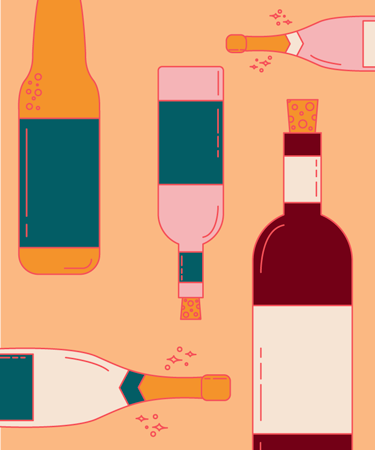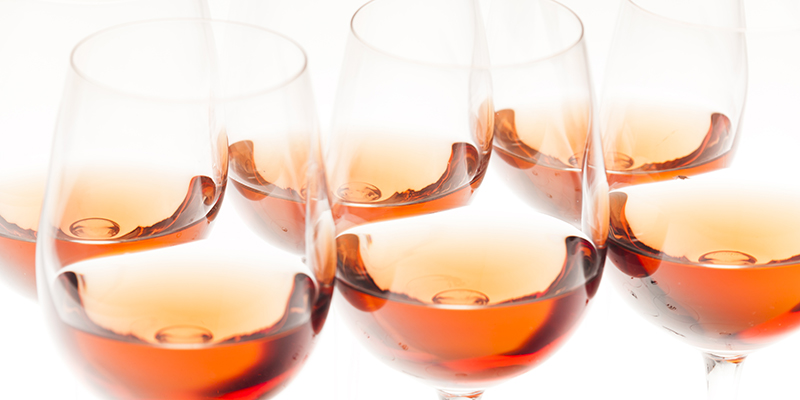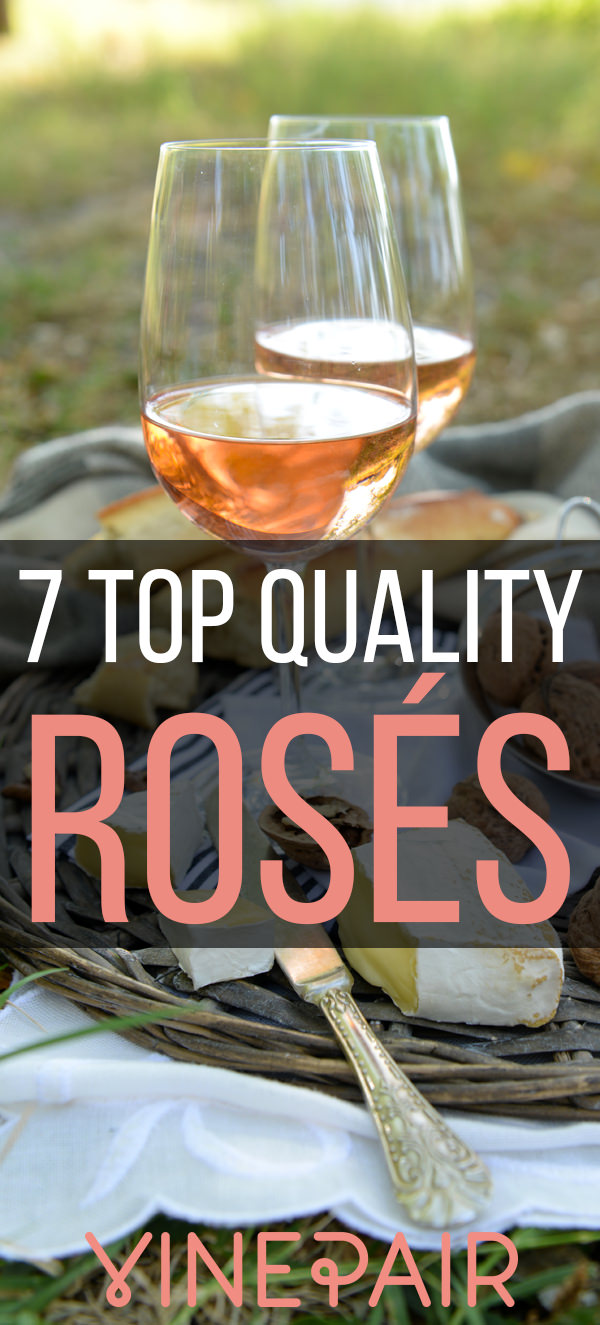
If you’re reaching the point of summer where, after many beachy afternoons and patio barbecues and sidewalk happy hours, you can hardly even look at a bottle of pink wine, know that you are not alone. Rosé fatigue can happen even to those of us who most ardently love this refreshing, warm-weather treat.
But don’t give up just yet on pink wine. Beyond your basic, everyday rosé, there is a whole tier of high-quality, gastronomically inclined rosé that you need to discover. These rosés are made with the same care as regular red or white wines—from excellent vineyards with ideal ripeness and juice that’s pressed and fermented to have just enough color without delivering the tannins of a fully red wine. A rosé, after all, is just a light red. When it’s treated as a serious wine, it can be incredibly aromatic, and stunning at the lunch or dinner table.
Try one of these high-end rosé wines the next time you’re in the mood for a special bottle that’s neither white, nor red. In fact, these are wines to drink year-round, not just in summer. They develop the best aromatics when they aren’t too chilled, so let the bottle warm up for a few minutes after being in the fridge.
Les Hauts de Smith (Bordeaux, FR)
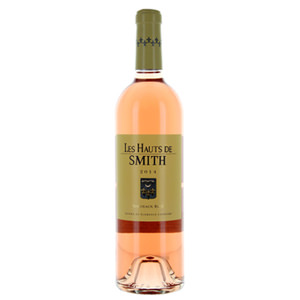
A rosé from Bordeaux? It may seem unlikely, but in fact, the blend of mostly Cabernet Sauvignon and 10 percent Merlot, grown on gravelly soils, delivers a structured and savory wine with a gorgeous salmon hue. On the palate, the wine shows tart berries and a splash of fresh melon; it’s perfect with salty-sweet foods like sausage and grilled onions.
Domaine Tempier (Provence, FR)
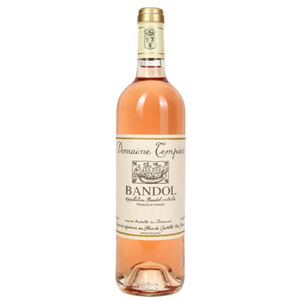
You don’t know high-end rosé until you’ve tried this one, the Grand Cru of all rosé wines, from historic Domaine Tempier in Provence. The Tempier family played a pivotal role in establishing the now-famed Bandol appellation, where the thick-skinned red Mourvèdre grape is grown on limestone and sandy soils. Mourvèdre is the basis for this pale pink wine, along with Grenache and Cinsault. This is a serious rosé that is crisp and a bit fruity when young and develops more savory characteristics as it ages in the bottle. If you can find slightly older vintages of Tempier—2011 or 2012—then you’re in for a real treat. In a similar vein, if you can cellar the 2015 you’ll be all set in years to come.
Chateau Simone (Provence, FR)
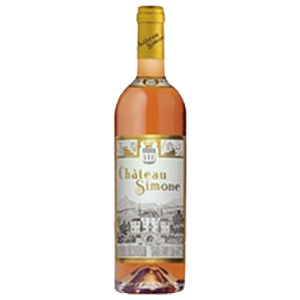
From the appellation of Palette, just south of Aix-en-Provence, this is a rosé that is closer to a light red in color and taste. It’s unique: a blend of nine grape varieties, fermented in large wooden casks, then aged on the lees in barrels to develop texture and body. The 2010 is drinking extremely well right now: it is rich and savory but also fresh and lively. Definitely a food wine.
Chateau de Trinquevedel (Rhone Valley, FR)
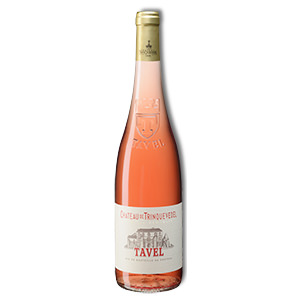
The Tavel appellation in France’s Rhone Valley is renowned for its Grenache-based rosé, which displays a signature color of gooseberry or fresh raspberry—and some of these flavors, too! Along with Grenache, this wine features Cinsault, a bit of Syrah and Mourvèdre, and 15 percent of a local white grape called Clairette (and a touch of another local white grape called Bourboulenc). On opening a bottle of Tavel there is usually a fruity flavor to the wine, but as it stays in contact with air its minerality and savory character shine through. Tavel is spectacular on a late-summer dinner table, with lentils, pasta, or chicken.
Clos Cibonne (Provence, FR)
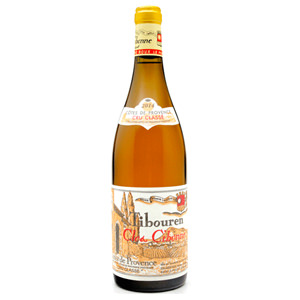
This is a unique, somewhat oddball rosé made from an indigenous variety called Tibouren and aged in large wooden casks for one year under a veil of yeast (called flor in French). The current vintage is 2014. The aging under flor lends the wine a beautiful, rich texture, which complements the fruit notes in the juice. It’s great with all sorts of cheese and charcuterie.
Arnot-Roberts (Northern California, US)
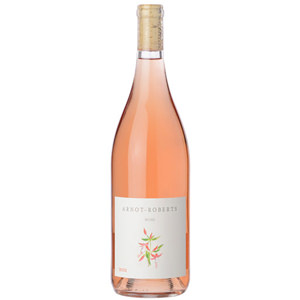
The Portuguese grape Touriga Nacional, one of the principal varieties in Port wine, stars in this stellar rosé from the winemaking team behind Arnot-Roberts, known as pioneers of the “New California Wine” movement that emphasizes lower-alcohol and terroir-driven wine. A lovely berry hue makes the juice appealing, and when it’s in the glass you’ll appreciate the mélange of melon flavors and savory notes and the uplifting acidic backbone. With roast chicken, this wine is absolutely killer.
Love & Hope (Paso Robles, CA, US)
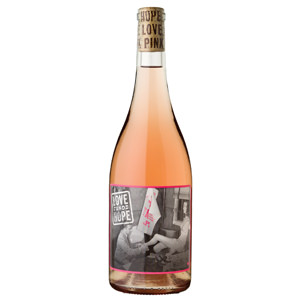
Winemaker Austin Hope created this wine, made from Mourvèdre, Grenache, and Syrah, in collaboration with a chef, Tim Love. Their combined last names were an obvious choice for a solid wine name. 25 percent of the juice is fermented in oak to provide some structure for these hearty, thick-skinned southern French grapes. It is very savory, with citrus accents, a refreshing dose of acidity, and just enough texture to pair it with food. It’s sold by the six-pack on the winemaker’s website and at retail and restaurant outlets in California, Florida, and Texas.
